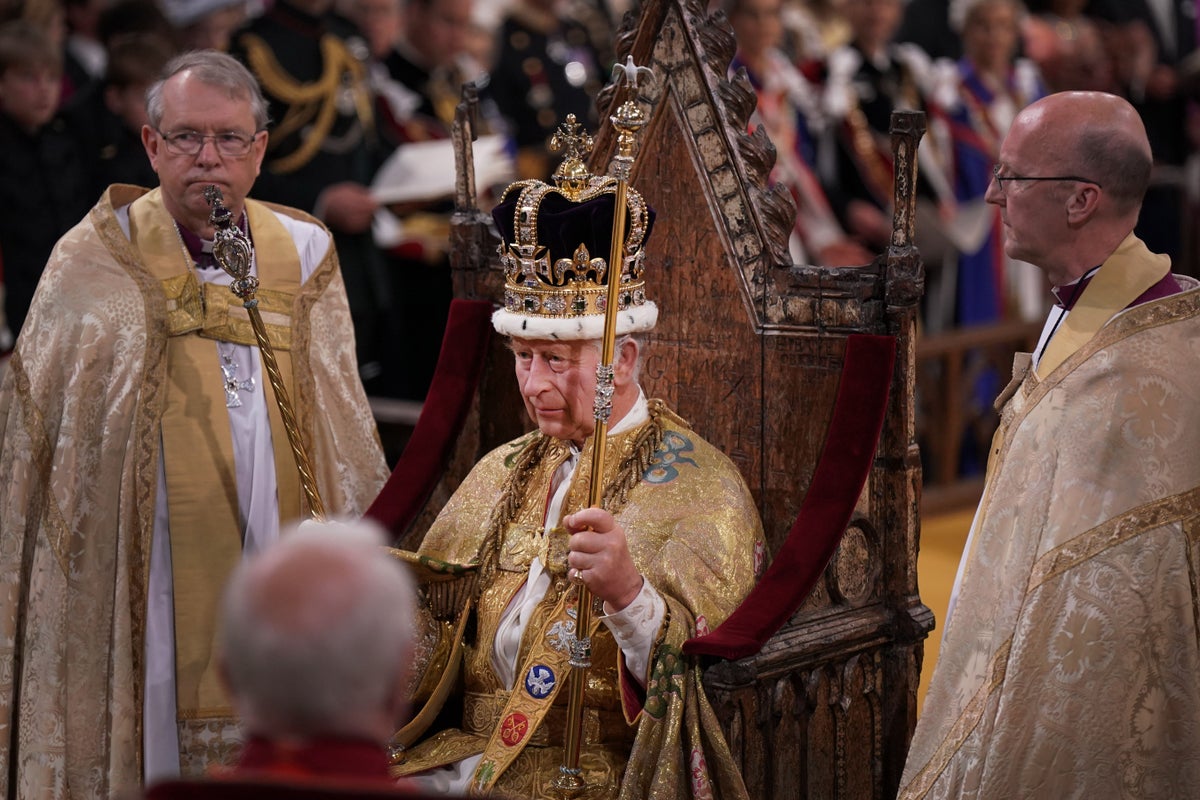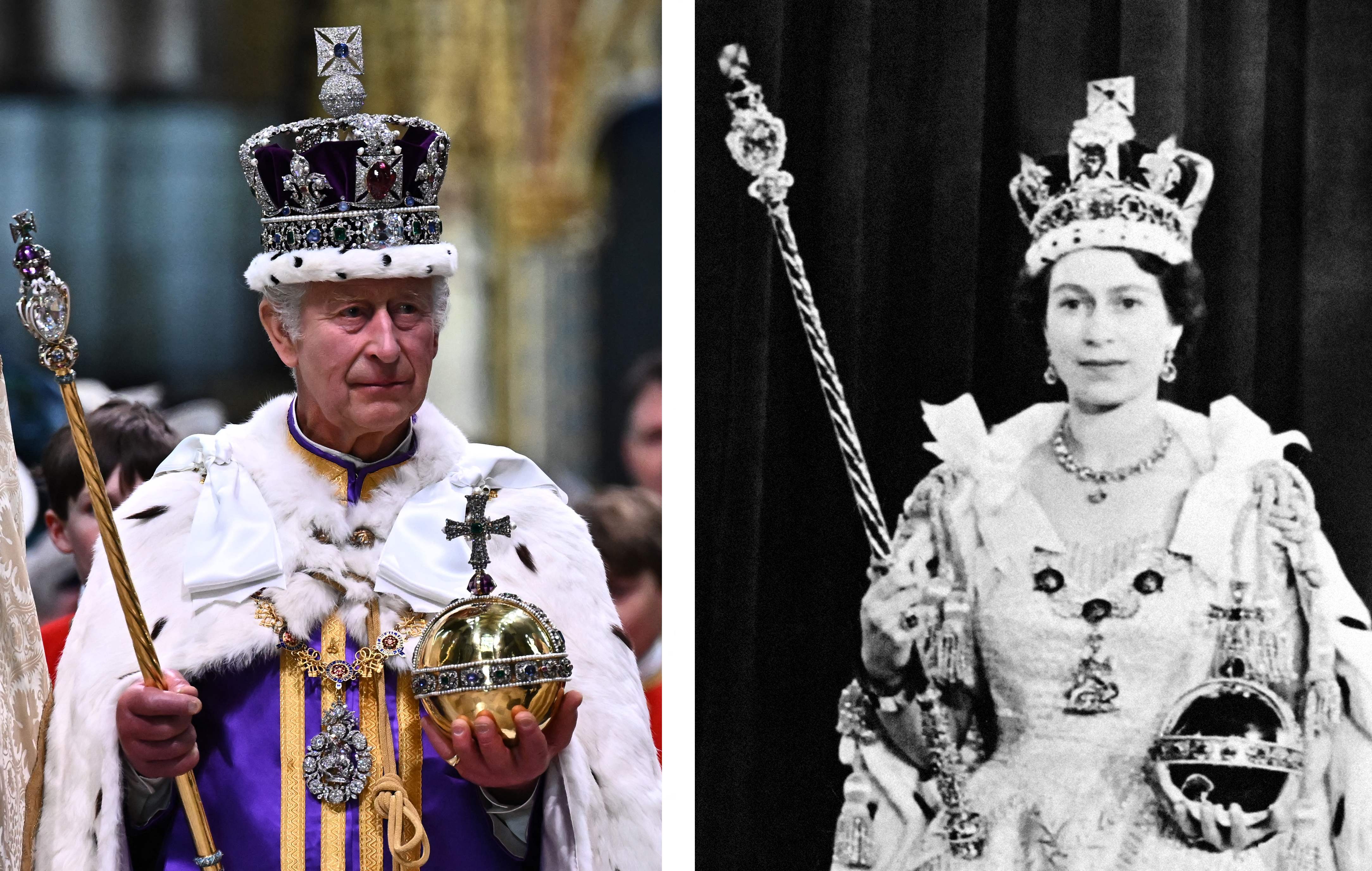
The coronation of King Charles III was viewed by a peak television audience of 20 million in the UK yesterday – making it the most-watched broadcast of the year so far by a considerable distance.
The vast figure was not enough to trump that of Queen Elizabeth’s funeral, however, which totted up an average audience of around 26.5 million people across more than 50 TV channels.
It is thought that the viewing figures for the ceremony at Westminister Abbey were given a boost by the wet weather across much of the country, which forced revellers indoors and left outdoor viewing parties empty.
The BBC drew in the largest audience, with a peak audience of 15.5 million watching the coverage across BBC One, BBC Two and the BBC News Channel.
Read our live coverage of the coronation weekend here.
In close second was ITV, with 3.6 million viewers tuned in. A further 800,000 viewers opted to watch the ceremony on Sky News and Sky Showcase, Barb viewing figures provided by agency Digital-i show.
An average of 18.8 million people watched across 11 channels and services throughout the day, with audience figures peaking at 20.4 million when the King was crowned just after midday.

The actual viewership is likely substantially larger than the TV audience figures alone, since those who watched the ceremony via live streams and on YouTube were not taken into account.
Millions of people are thought to have watched the Queen’s coronation on television in June 1953 – but there are no reliable figures, making comparisons with TV ratings of today difficult.
There was no independent organisation responsible for compiling and publishing ratings, and no consistent way in which the data was collected. Instead, the BBC carried out its own surveys to discover what people had seen or heard on the television and radio.
The surveys were not carried out in a particularly robust way: BBC staff interviewed a varying cross-section of people across the country, asked them to remember what they had watched recently, then used the responses to estimate a figure for the overall number of viewers.
Based on surveys carried out after the coronation of Elizabeth II, the BBC estimated its television coverage of the event was seen by more than 20 million adults in Britain.

Twenty million is still a remarkable number when considering the number of households with a TV licence on March 31 1953 – nine weeks before the coronation took place – stood at just 2.1 million.
With so few licences, and such a huge estimated TV audience, many people are likely to have watched the coronation at someone else’s house, getting together with neighbours, friends and family.
As television was still in its infancy in the UK in the early 1950s and the same was true of the methods used to measure its audience, estimates of TV audiences cannot be compared directly with TV ratings as they are measured today.
The current method of calculating TV audiences was established only in 1981 by the audience research organisation Barb.
Since 1981, the highest TV audience on record was for the funeral service for Diana, Princess of Wales, in September 1997, which was seen by 31.0 million on the BBC and ITV.
The King’s coronation also had a lower combined audience than the televised address by former prime minister Boris Johnson in March 2020, during which he announced the first Covid-19 lockdown, which was watched by 28.2 million people.

The ratings are also lower than the opening and closing ceremonies of the London 2012 Olympic Games, which had 24.2 million and 24.5 million viewers respectively on BBC One, and the final of the Euro 2020 football championship in July 2021, which attracted a combined total of 22.5 million on BBC One and ITV.
It did overtake the viewer ratings for the Queen’s Platinum Jubilee concert, which took place in front of Buckingham Palace last June, as it was watched by an average of 13.1 million people on BBC One.
With additional reporting from PA







